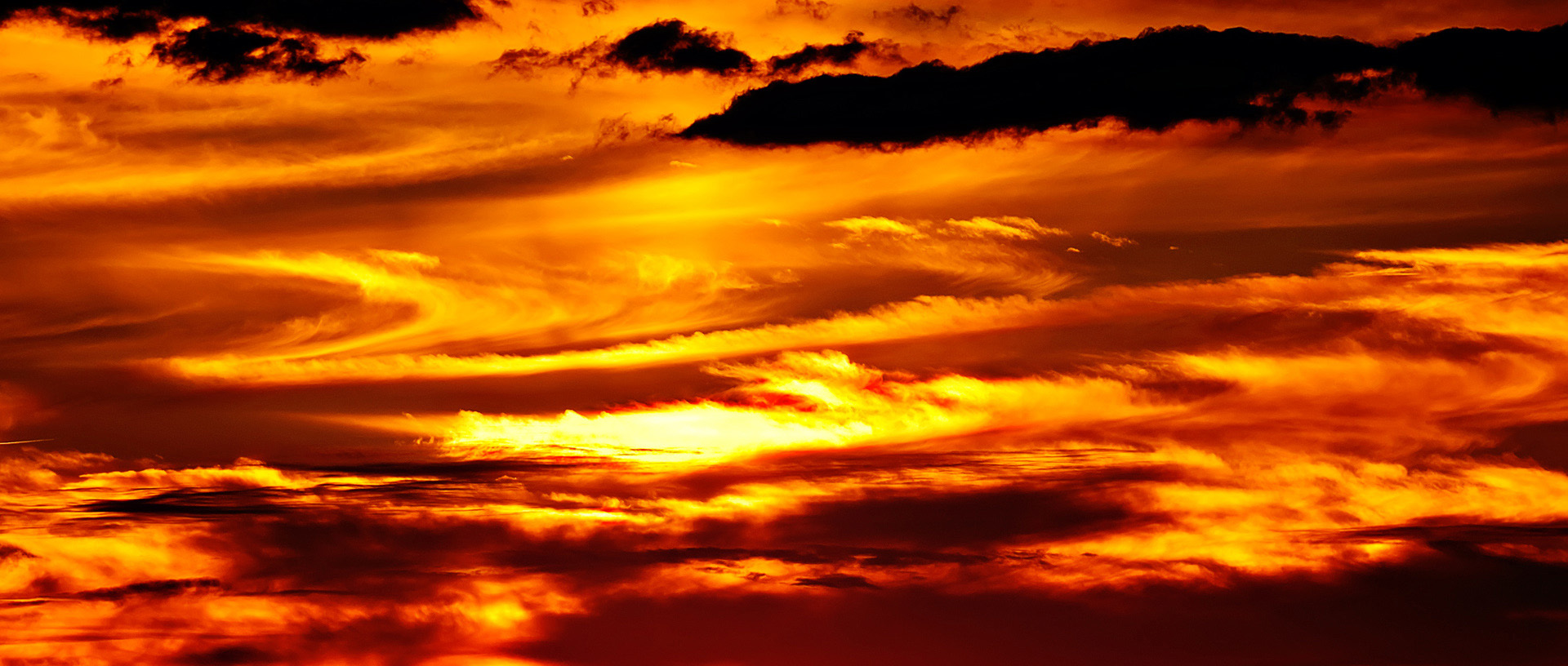-
Posts
4,093 -
Joined
-
Last visited
-
Days Won
49
Everything posted by Brian
-
The other think you have to keep in mind, is you don't always put the AF point on your daughter's eye when she is that far away. You see, as far as your camera is concerned, there is a teeny-tiny bit of contrast swing (her eye) surrounded by a pinkish blob, (her face.) So your camera will take a best educated guess on focusing. For this shot, this is the wrong lens to use. Stopping down would have helped a smidge and maybe putting the AF point on her left arm could have helped, but nothing to write home about. The end result would still be the roughly the same. Wrong lens choice.
-

New PC - what specs to look for?
Brian replied to RachelHolden's topic in The Windows & PC Hardware Forum
All kidding aside, the PC that is listed in the chart is a very nice one. It's "better" than the Dell XPS 8900 that I normally recommend. You see, what is "Great" now is already outdated. Within 6 months, something even better will come out. So I don't get excited by technology that much, because it's constantly evolving. Manufactures do not want you holding onto a computer for 5-7 years. They want you in the market sooner rather than later. So they keep pumping stuff out model after model. By the time you have done your research and saved up enough money and finally made a decision, that model you were going to buy has been replaced...and not always by something better. So if it were me, I'd get the one you were quoted and purchase a Dell Ultrasharp Monitor. -
Enjoy your purchase!!
- 1 reply
-
- 1
-

-

New PC - what specs to look for?
Brian replied to RachelHolden's topic in The Windows & PC Hardware Forum
I just got to thinking, what would be a "Great" off the shelf computer that is already built? Alienware comes to mind. I'd look at the Alienware Area 51 line and would start with the $2099 model. Be sure to include a keyboard and mouse, since they are extra. High-end computers are targeted towards people who have no problems dropping a few hundred on a mouse and keyboard, so they don't come standard. http://www.dell.com/us/p/alienware-area51-r2/pd?oc=dpcw02s&model_id=alienware-area51-r2#overrides=dpcw02s:4~W8AWENG;12~AWLMMG1 -

New PC - what specs to look for?
Brian replied to RachelHolden's topic in The Windows & PC Hardware Forum
If you want great, we can do great. I configured a "Awesome" computer...and stopped at $2700. Final cost was around $3600. Of course, you'll have to put it together yourself. Off the shelf computers aren't great. They are fine. They will get the job done. PS doesn't need a lot of horsepower. It won't take advantage of the architecture of a "Great" computer. You are just blowing money and trying to show off if you went that route. Just like PS runs slower on a Mac Pro vs a fast iMac. Now if you are editing video, that's a different story. So take my specs that I have laid out and use them as a baseline. Find a computer that has triple the specs and has awesome reviews. -

New PC - what specs to look for?
Brian replied to RachelHolden's topic in The Windows & PC Hardware Forum
Dell XPS 8900 -
Yep! Most lenses fall apart if the subject is more than 20 feet away. This is normal. Everyone talks about minimum focusing distance, but not maximum focusing distance, which is usually between 15-20+ feet. One of my most used lenses is the Nikon 17-55 f/2.8. It's the "24-70" for crop bodies. Anyway, when the subject is between 5 feet and 15 feet away, they are tack sharp. 16-20 feet away, they are "OK Sharp...gonna have to do stuff in PS later." 20 Feet or more...forget it. I'm reaching for my 70-200 and using compression to my advantage. I do know that Sigma has released firmware updates for the various ART lenses which helped some with focusing issues. You need the Sigma USB Dock in order to do the firmware update. That said, I don't think it applies here. This just boils down to good 'ol #KNOWINGYOURGEAR and when to use the lens...and when not to. Now if you are going to be doing photos like this and want to crop in severely, to get the detail that you want, you are buying a Nikon D810 or one of the Canon 50MP cameras. However, before blowing thousands on a camera body, can I interest you in spending that money on a 70-200 f/2.8 lens? That will do more for you than a new camera body. To give you an example, I was about the same distance away as you were when I took this shot with my 70-200 f/2.8 VR II:
-

New PC - what specs to look for?
Brian replied to RachelHolden's topic in The Windows & PC Hardware Forum
Yes I'd get a Dell Ultrasharp instead. -
Oh, I NEVER buy those extended warranty things, unless it's AppleCare. They almost never want to fix things and are pure profit for the resellers.
-
Phew!!! That's ok!! Nikon will touch it. Make a copy of your proof of purchase (receipt) and contact Nikon. Even though it's out of warranty, it's still good to include a copy. BTW, Nikon DOES NOT want it sent in the camera's box. So find a plain box and wrap it well in bubble-wrap. (Remember, Fra-Gil-Aye is Swahili for "Drop Me.") Visit Nikon's Website to schedule a repair and to print out the necessary paperwork and address card. Nikon will give you a quote before proceeding with any repairs. For the problem description, just tell the what you told me in the above comment. Hope it isn't too expensive. I'm thinking around $350 to fix. Let me know if I'm close.
-

External monitor for a Toshiba Satellite L50-B
Brian replied to Alice_M's topic in The Windows & PC Hardware Forum
Both seem fine. The only brand I would avoid is Samsung. They make great displays, but are a real pain to get calibrated. Those LG ones you linked to seem to be ok. -

New PC - what specs to look for?
Brian replied to RachelHolden's topic in The Windows & PC Hardware Forum
Computer is fine. Samsung displays are a real pain in the ass when it comes to calibration. I'd skip the Samsung Display and get the computer. -
Does it come with a IPS Display Panel?
-
There are two repair centers in the US. States East of the Mississippi River sent their equipment to NY. West of the Mississippi get sent to CA.
-
How does one know if it's "Grey Market?" - Price is a lot less than the "Normal" price that you see at various retailers. The reason is, like Apple, Nikon controls the minimum prices for the "legit" stuff. So the price on Amazon, B&H, Adorama should be about the same, $3299.99 $3299.95, $3295.00, etc. If you see a "New" D810 for $2499, or $1999...you aren't getting a deal. You are getting suckered. - The reseller will boast about its own warranty service and play down the standard 12 Month Nikon Warranty. "Have peace of mind with a 36 Month warranty from ___________!!" - The camera will be listed with the word "Import" or "Grey/Gray Market" next to it online. Of course, this is from a reputable dealer. - Too good to be true pricing. A D810 retails for $3299 and goes on sale for around $2799, $2796.95, etc. So if you see one being sold as new for $1499, that's a dead give-away. Some shady retailers will go as far as to charge you $1200 for a D810, then charge extra for the batteries, charger, manual, camera strap, and then force you to buy a overpriced memory card and accessory bundle. Combine that with a unknown warranty place that won't honor claims, and you will learn an expensive lesson. In the end, you end up paying the full amount, or even more than if you just bought it outright at an authorized dealer.
-
Sounds like you bought a Gray / Grey Market item. Which means that the camera didn't follow normal import channels and DOES NOT come with a Nikon Warranty. In fact, NikonUSA WILL NOT TOUCH IT IF SENT INTO REPAIR, EVEN IF IT'S OUT OF WARRANTY! So if it is a Grey Market item, it becomes a paperweight if it breaks and the place that you bought it from wont repair it. Did you get a NikonUSA warranty card in the box? Hopefully you did. The next step I would take is to call Nikon and give them the Serial Number to see if they will touch it. I'd hate for you to pay shipping only to have it sent immediately back to you.
-
Unless you want to hate life, do not get a all-in-one touch screen for photo editing. For a decent editing computer that will last you around 5+ years, expect the final cost to be between $1000-$1500 for everything. If you are looking only to spend $500 total, expect to be replacing that system in about 18-24 months.
-
The "Hardware Stuff" of Ask Damien is covered here in the "Ask Brian" section here in the new forums. You found the right place to post this. Thanks for the head's up.
-
It occurred to me that having something like an iPad to do in person sales is something to consider. Or am I wrong? What Apps or Software do you use? What do you use hardware-wise? IPad? Laptop? Big display on a wall in your studio? I'm curious!
-

images not showing for clients
Brian replied to Stacey Sedgman's topic in The Windows & PC Hardware Forum
Using a iPad and doing in person sales is something to consider. I'm going to create a thread in the Land of Misfits for others to chime in. -

images not showing for clients
Brian replied to Stacey Sedgman's topic in The Windows & PC Hardware Forum
That might be your problem. Check the settings. Make sure you tell it that you are burning (data) files and not photos. The software could be screwing things up and making it so that only a DVD player will read the disk. Check to see if there is any documentation and if so, give it a read. Or... ...if that software is still fighting you, I'd take a hard look at Nero 2016 Classic. ($44.99) Nero has been around forever and the 2016 version is Windows 10 compatible. More often than not, the default software that comes with the computer is pure crap, which doesn't work well. EDIT: I just re-read the last comment. It sounds like you are using the Windows Default process of writing to a disc. I'd seriously stop doing that and get Nero to help you. Time is money and happy clients are a good thing. For $45, it's an easy to fix situation. You have no control on what Windows does or how it burns the discs. Now I'm sure you are asking, "Why does this only happen to a few customers, but not all of them? I really don't feel like forking out $45 if I don't have to..." This is the problem with only providing disc media. Discs that you burn don't always work in certain drives. I've run across Computer DVD drives that HATE a particular brand and simply won't work. Other times they only can be read in a true DVD player. It really varies and it's not something you can predict. So my recommendation is to use true burning software and see if that helps. Also, I personally only recommend Verbatim and Sony Discs. The Memorex Discs that you can find everywhere are pure pieces of shit. I used to have constant problems with Memorex's media, from bad discs to customers not being able to read the damn things. When I switched to Verbatim, my problems went away. In addition, I have to be Captain Obvious on this one... You know what works 100% of the time... The media that enables a customer to view images without any extra technology and is guaranteed to work as long as you have a light source? A PRINTED PHOTOGRAPH!!!! *GASP!!!!* I know, everybody wants a damn disc. They only want images to post on Facebook for #Hashtags & #Humblebrags. I get it. But if you want to have ZERO problems with your customers being able to see their images, prints are the way to go. -
Photorec for the Mac is kinda Geeky. If you want a fancy interface that looks like a normal program, you'll need to pony up about $90. Insert the card into the Card Reader Double Click on the Photorec program, the one below NEWS in your screenshot A Terminal Box will appear, asking for your Admin Password. (The one you use to log on the computer with.) Follow the instructions here: http://www.cgsecurity.org/wiki/PhotoRec_Step_By_Step Now, I'm sure those instructions are gonna freak you out. The Mac OS is based on a old operating system called UNIX (Pronounced (You-Nicks). So a program like that, which is free, is going to be written along those command prompt lines. As soon as you start offering a Graphical Interface on a Mac, people start charging. So you might want to do the trial on one of the programs and see how it works for you.
-

Moving back to my desktop :)
Brian replied to nikki_neste's topic in The Windows & PC Hardware Forum
What you need is a desk that fits you height-wise. The "Standard" desk height is 28" (I think.) Some people like 26", others 30". So it really depends on the person. Believe it or not, your elbow / arm position being caused by the height of the desk makes all the difference. I had my desk too high and after long periods of time, usually during a wedding edit, I had severe upper back pain. It was only after I lowered the desk by 2" did it make the problem go away. Yes, just 2" made a HUGE difference. The second thing you probably need to have purchased instead of a laptop is a high-quality chair. Not the El-Cheapo ones you get at Staples or an OfficeMax. No...I'm talking about a real desk-chair that makes your arse feel as if it's being "Coddled by Angels." Those chairs cost as much as laptops and usually start at the $500 mark. Something to think about. -
The image that you see on the camera's LCD is the JPEG PREVIEW AND NOT THE RAW FILES THEMSELVES. Always remember, your camera's LCD is a Lying and Cheating Whore who will sell you down the River if given the chance. Never trust it, especially if you have problems like this one. It sounds like the card is damaged or the Pins in your reader might be screwed up, if it's the CF type of card. Macs generally don't like talking to cameras, it's better to use a card reader. If you have a friend that is close by and has one, you might want to see if you can borrow it and try it again. You shouldn't need any special software, if you have your Mac OS setup to display the reader on the desktop (when a card is inserted) it should be just a matter of copying the files over. If that doesn't work, you are looking at using recovery software to get the images off, but there are no guarantees. Recuva is only for Windows. There is a "Alternative" Recuva for Mac, but it's $89.95. There is "DataRecovery for Mac" from Wondershare and it's free to try. There are several recovery programs for the Mac, but they are usually paid. The only one that I'm aware of that's 100% free is Photorec. There are two verions, one for the PowerPC CPU chip and one for the Intel CPU chip. If your mac dates from 2009 to the present, you need to download the Intel Version. In fact, let's not talk about the PowerPC version and stick with Intel. Photorec for Intel Based (Current) Macs Oh, TestDisk and Photorec come together in the download file. Photorec is what you want to use in this case, as TestDisk does more with Hard Drives, Partitions and Operating Systems, etc.
-

Moving back to my desktop :)
Brian replied to nikki_neste's topic in The Windows & PC Hardware Forum
This warms my heart. Get your files and important things onto an external HD. You can get a 1TB EHD for less than $100 these days. As far as your desktop, MAKE SURE YOU CREATE THE RECOVERY MEDIA before Nuking the computer. If it was a store-bought computer, it would have bugged you to do this when you first got it. Most people ignore those prompts and never seem to get around creating the recovery media. With this media, taking it back to "Day 1" is pretty easy to do. Of course, if you want to install something like Windows 10 Pro fresh, then that's a whole other can of worms. The easiest way to Nuke your desktop is with the software that came with it. Look for it under your Manufacture's name in the Start Menu. It might be listed as "Create Recovery Media" or "Make System Boot Disks" or something along those lines. You'll see it and it will prompt you for either a fresh/clean ThumbDrive or a couple of blank DVDs to create the set.



